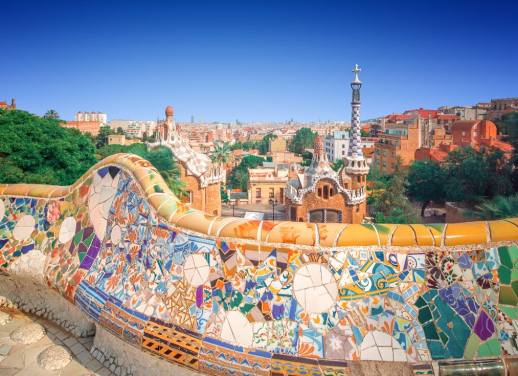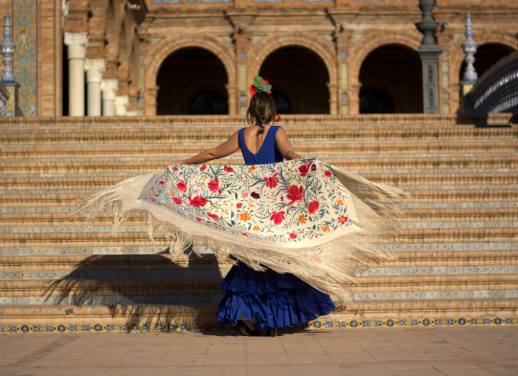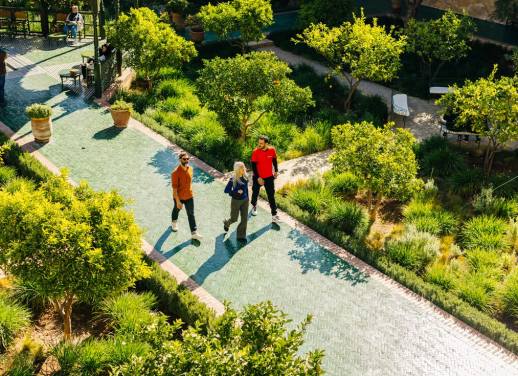Fernando’s face beams at me as I take a bite of the deep-fried pigs’ ear, our post-hike snack. We’ve just finished a gruelling excursion around the mountains, and our small group – me, my English teaching colleague and three of our adult students – has returned to our starting point of Ricote and retired in an unassuming restaurant, El Sordo. It’s one of the fanciest restaurants I’ve ever been to, in a town of just over 1000, in the dusty middle of nowhere, Murcia.
“Muy bien chico!” he cheers when I go back for more, saluting me with his raised glass of vino tinto. I lift my own glass in return, smacking my lips in enjoyment, and think to myself – this is the real Spain.
EXPLORE OUR RANGE OF SMALL GROUP ADVENTURES IN SPAIN NOW
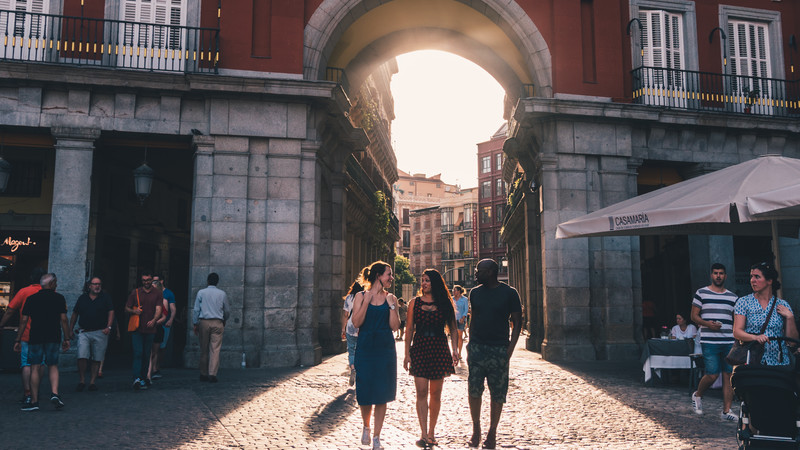
Exploring Madrid during magic hour. Photo by Mark Borton.
In a country bursting with some of the world’s biggest tourist attractions, from Gaudi’s wacky architectural creations in Barcelona to the countless grand Cathedrals and medieval towns, it’s easy to get caught up in a whirlwind of ticking off the big-hitters.
But a trip to Spain is so much more than the attractions that make it up. It’s about discovering the good life. It’s about afternoon cañas in the sun, post-siesta parades of dog walkers, sharing late-night dinners with friends. With over-tourism emerging as one of the country’s biggest challenges for the future, it’s more important than ever to go beyond the surface of the country to seek out those authentic experiences.
SUBSCRIBE TO INTREPID’S NEWSLETTER FOR TRAVEL TIPS, COMPETITIONS, GIVEAWAYS & MORE
Experiencing the real Spanish flavours
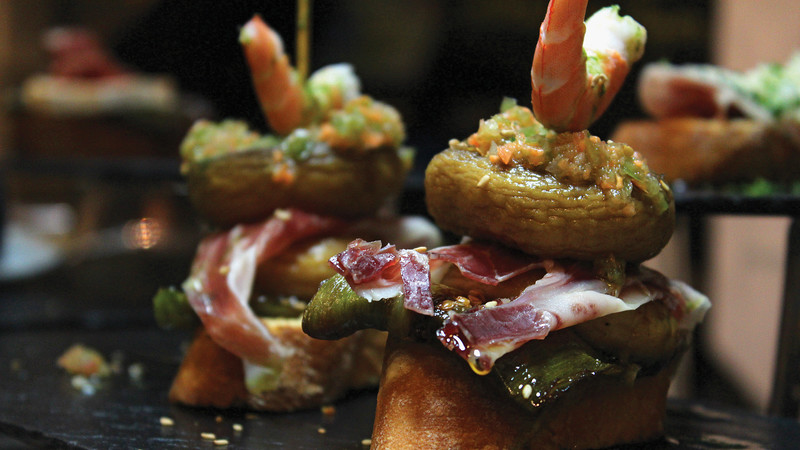
Enjoy traditional tapas, away from the tourist traps. Photo by Bevan Connelly.
Food in Spain is a celebration. Families place great importance on coming together for meals, and the diversity of the culinary scene in the country reflects Spain’s distinct cultures. Each region enjoys their own special flavours, ingredients and dishes, and it’s easy to see why the country has been leading the culinary world for an age now.
But that heady mix of Spanish flavour can sometimes fall by the wayside, especially as you lament the choice of restaurants from your place in slow-shuffling tourist processions through the popular areas, like La Rambla in Barcelona. Skip the set menu for a night and instead look for a combination cooking school/restaurant, like The Paella Club in Barcelona, where you can experience real Spanish cuisine without the fuss. Friendly locals can host you and your friends for an evening, where you’ll be taught secret recipes passed down through the generations and cook up a storm. But the best part comes afterwards, when you get to enjoy the fruits of your labours – always in good company.
SAMPLE HOME-COOKED CATALAN CUISINE ON OUR 10-DAY NORTHERN SPAIN REAL FOOD ADVENTURE
Discovering the lesser-known stories
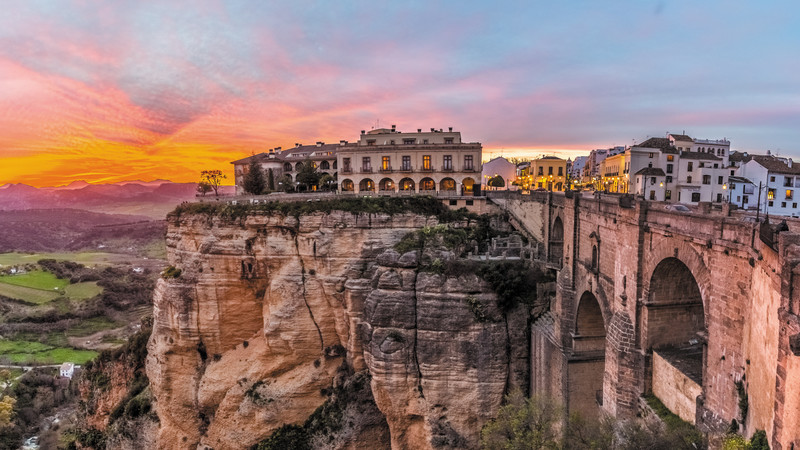
The incredible cliff-top village of Ronda. Photo by K. Roy Zerloch.
History comes alive in Andalucía, the Spain of people’s imagination. White-washed villages perch atop craggy hills, sun-splashed squares are fragrant with the smell of citrus, breezy summer nights are spent fireside watching fiery flamenco dancers. It’s in Andalucía where you’ll find ancient relics of Roman and Moorish rule, giving the perfect opportunity to trace the history of the country, an important thread that connects the people of Spain.
But there’s some lesser-known stories that played out across the country as well. Like Australia’s bushranger Ned Kelly, so too did Spain have their famous antiheroes; outlaws who roamed the Andalusian mountains in the 17th and 18th centuries. El Museo del Bandolero in Ronda is dedicated to exploring the history and motives behind Spain’s often-charming rogues, who haunted the high mountain passes of Andalucía and controlled smuggling routes from the south.
RELATED: 4 REASONS WHY SPAIN IS AN AWESOME DESTINATION FOR FAMILY TRAVEL
Or why not discover La Gomera of the Canary Islands, where links to the past are kept alive not through a museum, but through the people themselves. The deep gullies entrenched across this island encouraged the invention of Silbo Gomero, a UNESCO-protected language made up entirely of whistles. Articulate messages were echoed across great distances in the language that is still alive today, tying together the small community.
Celebrating the good life
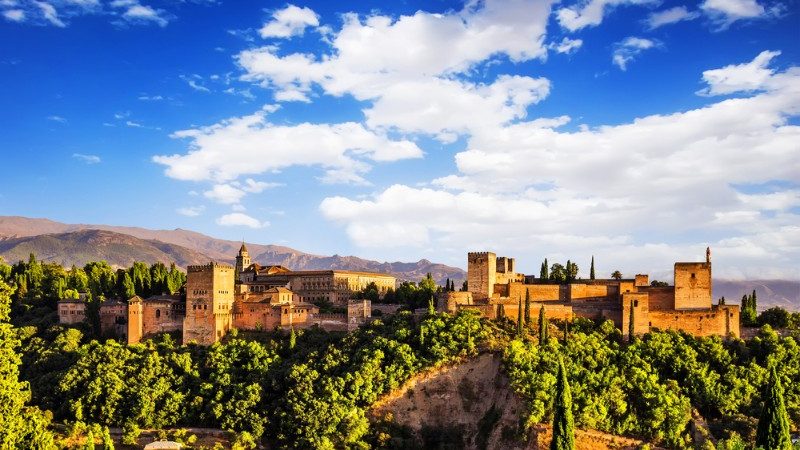
Alhambra fortress, Granada. Photo by Marques.
It’s a fact: Spanish people love the outdoors. Getting active is an important part of life, and most weekends will be spent in nature with friends. And when Spain looks like it does, then why not?
The three Balearic Islands in the Mediterranean Sea are paradise getaways. But it’s little Menorca that gets overlooked, thanks to the raucous nightlife of its bigger brothers Ibiza and Mallorca. The island has been committed to sustainable tourism since before it was cool and is the perfect escape to ditch the crowds and explore nature. The Cami de Cavalls is a 185-kilometre-long path that circles the coast of the island, and can be walked, cycled, or even traversed on horseback.
RELATED: SPAIN IN ONE WEEK: THE ULTIMATE GUIDE
It’s the times like these, when you scratch under the surface, that you’ll come away with a deeper understanding of the culture in Spain, and fond memories of the little things: impromptu language lessons given by impatient waiters; a view shared with friends; the crunchy pig-ears you’ll eat in unknown restaurants. But most importantly, the feeling of family and community that’s the beating heart of Spain.
Experience a different side of Spain on a small group adventure with Intrepid – explore our range of trips here.


